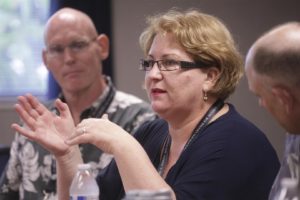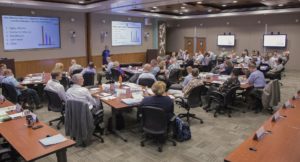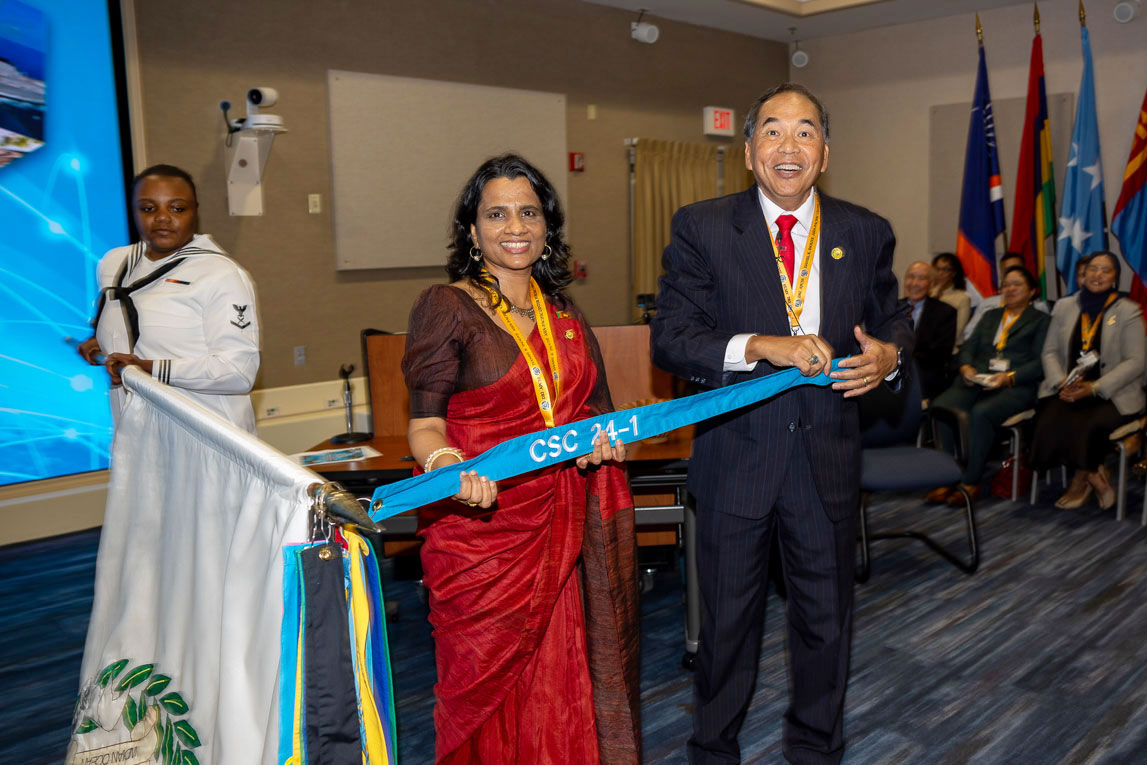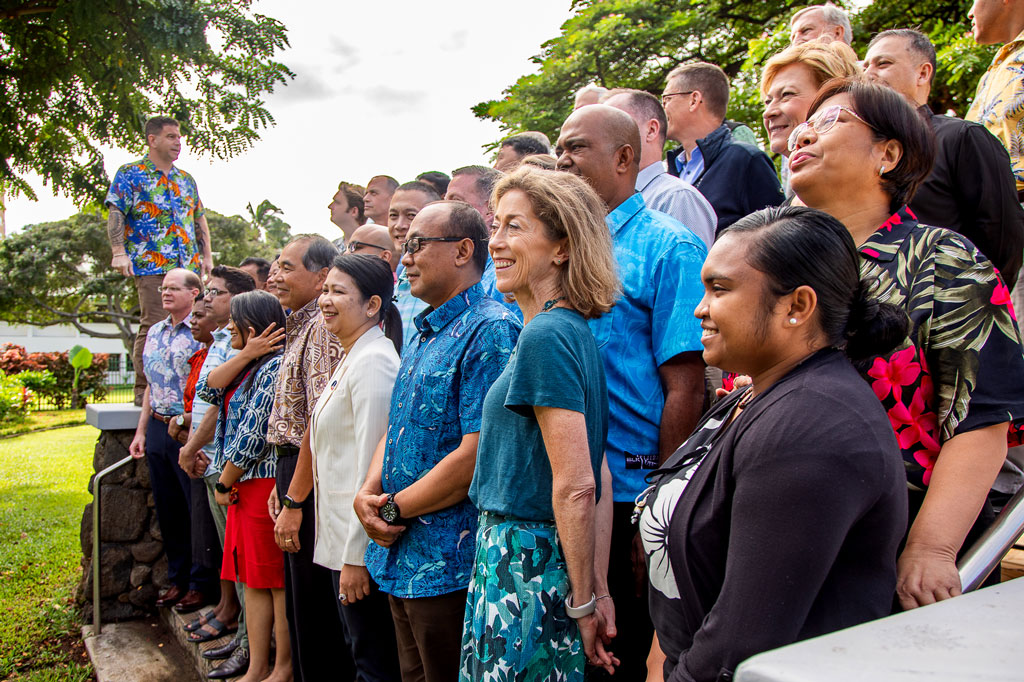
Forty-one Fellows took part in the Oct. 4 to 6 Senior Executive Asia-Pacific Orientation Course 16-1 at the Daniel K. Inouye Asia-Pacific Center for Security Studies.
Forty-one senior leaders received a comprehensive look at major security trends in the Asia-Pacific region in the Oct. 4 to 6 Senior Executive Asia-Pacific Orientation Course 16-1 at the Daniel K. Inouye Asia-Pacific Center for Security Studies.
SEAPOC brings together United States military and civilian leaders along with ally and partner nation counterparts to discuss complex security challenges and opportunities in the region’s constantly evolving security environment. The October iteration featured Fellows from Australia, Canada, the Philippines, Singapore, Taiwan, the United Kingdom and the United States.
Fellows took part in a mixture of plenary lectures and electives focused on major issues impacting the regional and global security environment.
Among SEAPOC’s four lecture titles were “Geopolitical Landscape of Asia-Pacific Region,” and “Regional Security Architecture” by faculty members Dr. Chris Snedden and Dr. Alex Vuving respectively. Fellows chose from nine electives focused on topics such as “Demographic Trends and Implications on Asia-Pacific Security,” “Role of U.S.-Japan Alliance in the Asia-Pacific Region,” and “China in the South China Sea.”

Judith Swan, with Australia’s Department of Defence, shares her perspective during a seminar session Oct. 4. Swan was one of 41 senior leaders from the Asia-Pacific region to take part in the Senior Executive Asia-Pacific Orientation Course 16-1 Oct. 4 to 6.
Four seminar sessions, including two conducted jointly with 112 Fellows in the Advanced Security Cooperation course (ASC 16-3), enabled SEAPOC participants to clarify and build on topics in an informal, highly interactive environment. In their final seminar session, Fellows assessed America’s regional strategy using information and knowledge gained during the three-day course. Additionally, seminars enabled Fellows to share perspectives and build professional connections.
“It was quite gratifying to see changes in perceptions and expansion of their horizons among the participants,” said course manager Dr. Miemie Byrd. “Such learning will definitely contribute towards advancement of regional security cooperation.”
The course is a highly-intensive program, compressed into three days to accommodate participants’ time demands and existing knowledge base.
U.S. Coast Guard Capt. Brian Penoyer said, “(The course) is fantastic. There’s so much depth on each of the (sub-region’s) across the Indo-Asia-Pacific. It’s a great opportunity to see how all those pieces fit together, how complex the region is. It’s an exposure to issues you might not otherwise bump into.”
Penoyer, chief of staff for the Fourteenth Coast Division in Honolulu, Hawaii, added, the course offered material relevant to his profession, but he said he found issues beyond his area of responsibility the most interesting.
“I’m in the Coast Guard, and a lot of our primary focus is on Oceania. But listening to what’s going on in Southeast Asia and Northeast Asia…I found some similar themes in terms of the sort of security dilemmas of engagements and the interactive reactions (they) cause. To me it was fascinating to see that play out.”
SEAPOC is one of six formal courses at the APCSS. The center is a Department of Defense institute that addresses regional and global security issues. Military and civilian representatives, most from the United States and Asia-Pacific nations, participate in a comprehensive program of executive education, professional exchanges and outreach events, both in Hawaii and throughout the Asia-Pacific region.

Dr. Miemie Byrd leads a survey of Fellows’ positions on key security issues in the Asia-Pacific region during the Oct. 4 to 6 Senior Executive Asia-Pacific Orientation Course 16-1. The course is one of six in-resident programs held at the Daniel K. Inouye Asia-Pacific Center for Security Studies.
The Center supports the U.S. Pacific Command by developing and sustaining relationships among security practitioners and national security establishments throughout the region. APCSS’ mission is to build capacities and communities of interest by educating, connecting and empowering security practitioners to advance Asia-Pacific security. It is one of the Department of Defense’s five regional security studies centers.
Since opening in 1995, the Center has had more than 9,000 alumni representing over 122 countries and territories attend APCSS courses and workshops.
-END-









Leave A Comment